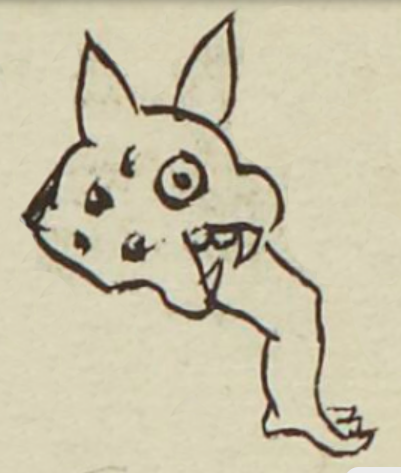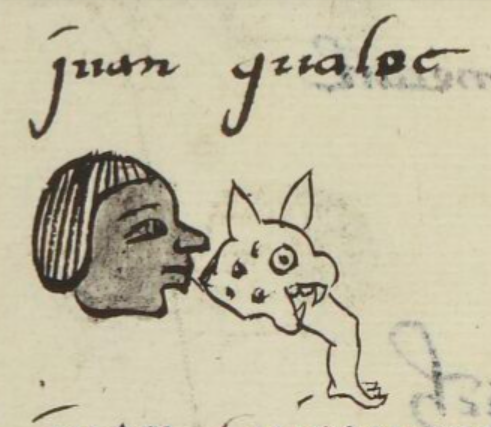Cualoc (MH532r)
This black-line drawing of the simplex glyph for the personal name Cualoc (“Eaten,” "Bitten," or "Eclipsed") attested here as a man’s name) shows a profile view of a spotted, wild animal (tecuani or ocelotl) with protruding teeth and a human leg coming out of his mouth. The animal and the leg are shown in profile. The animal's eye is open, his coat is spotted, and his teeth are very visible. The leg is not clothed and the foot is bare.
Stephanie Wood
The word cualoc ("eaten") is also part of the phrase that referred to an eclipse, when the sun was thought to be eaten. However, there is no obvious reason here to assume that the person's name is not "Eaten" or "Bitten," although a name like this could be metaphorical.
Stephanie Wood
juan gualoc
Juan Cualoc
Stephanie Wood
1560
Jeff Haskett-Wood
eaten, comido, bitten, mordido, animales, jaguares, nombres de hombres

tecuani, ferocious wild animal, literally one that bites people, https://nahuatl.wired-humanities.org/content/tecuani
cua, to eat or to bite, https://nahuatl.wired-humanities.org/content/cua
-lo, passive indicator, https://nahuatl.wired-humanities.org/content/lo-0
Él Que Ha Sido Comido, or Mordido
Stephanie Wood
Matrícula de Huexotzinco, folio 532r, https://www.loc.gov/resource/gdcwdl.wdl_15282/?sp=143&st=image
This manuscript is hosted by the Library of Congress and the World Digital Library; used here with the Creative Commons, “Attribution-NonCommercial-ShareAlike 3.0 License” (CC-BY-NC-SAq 3.0).






